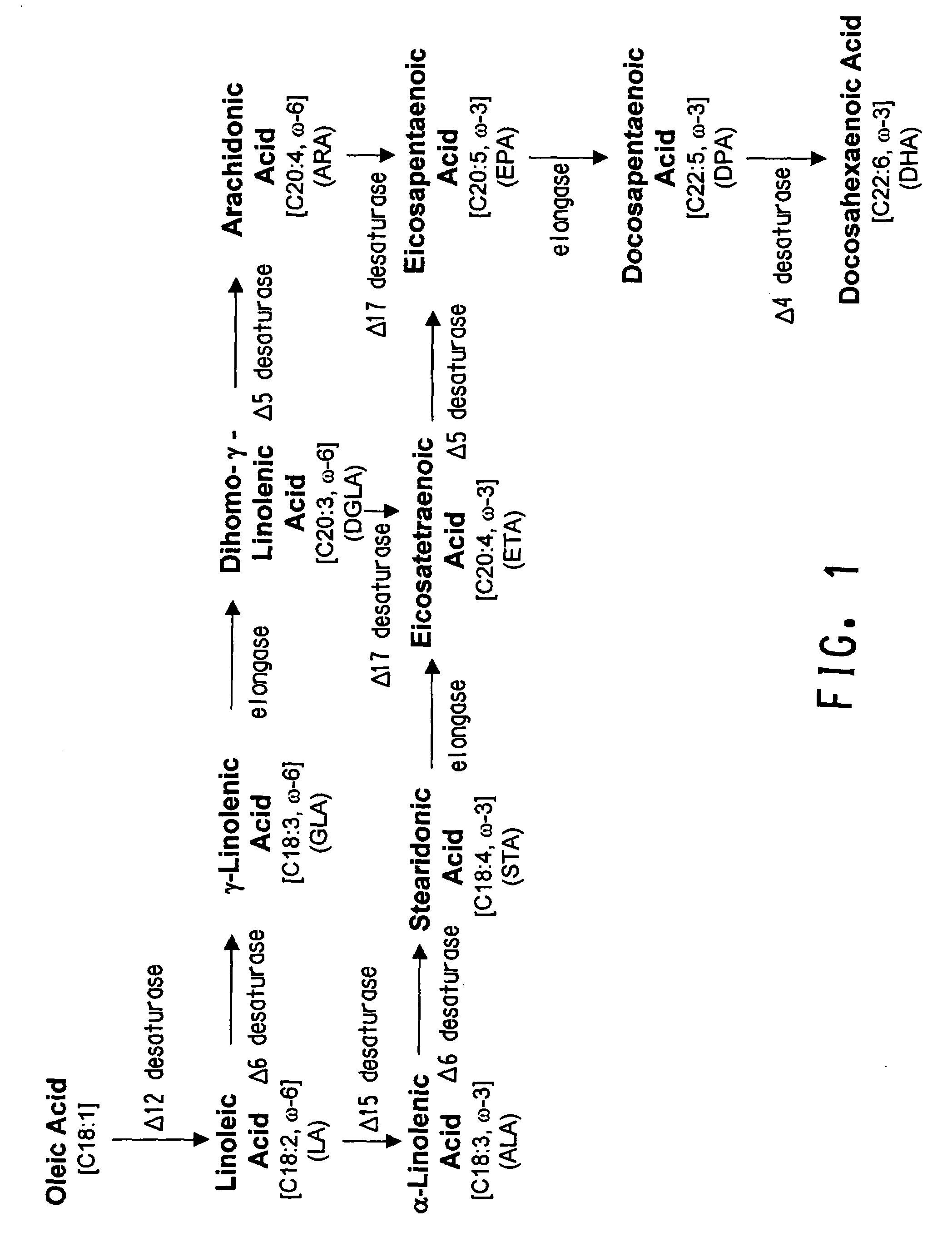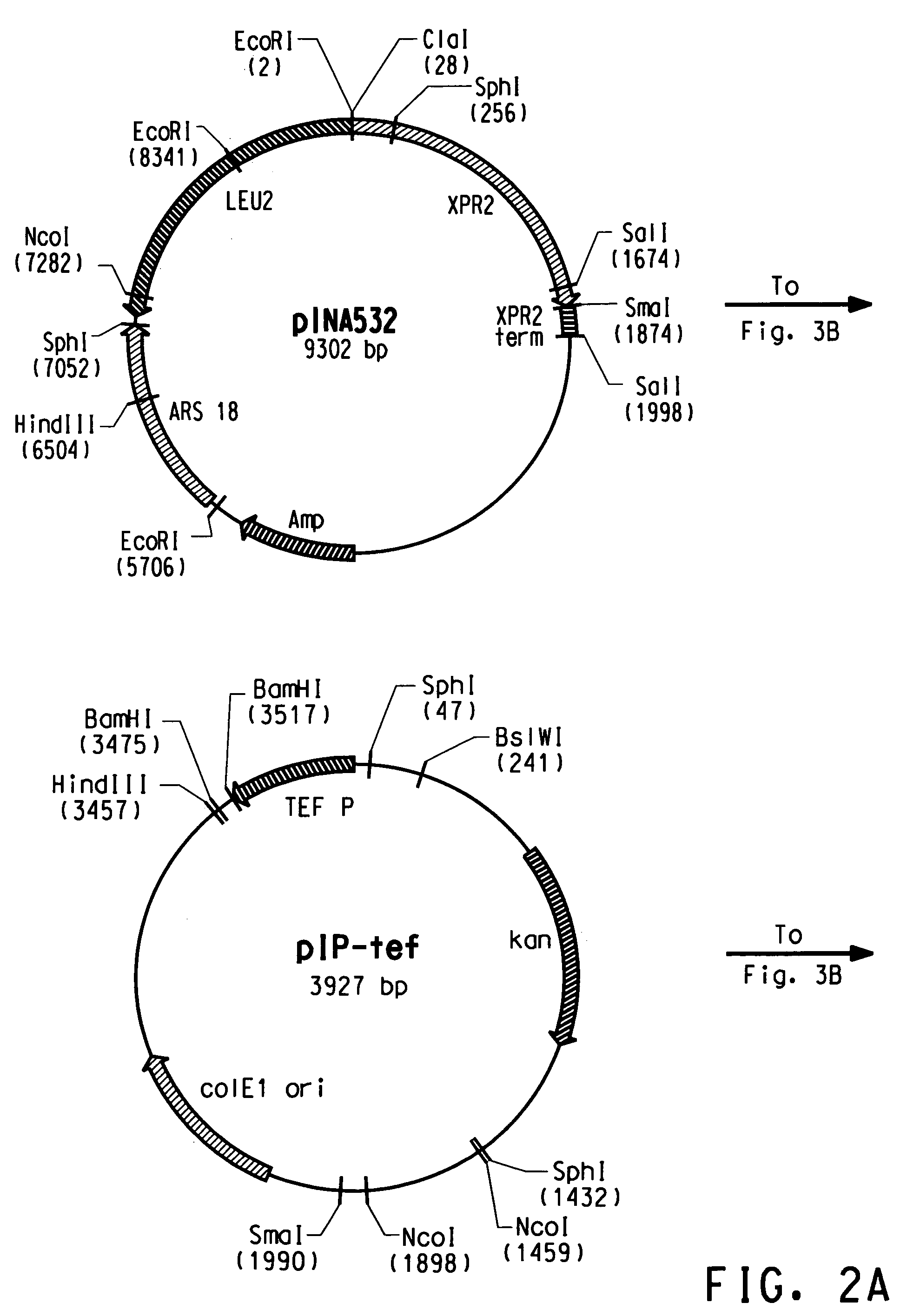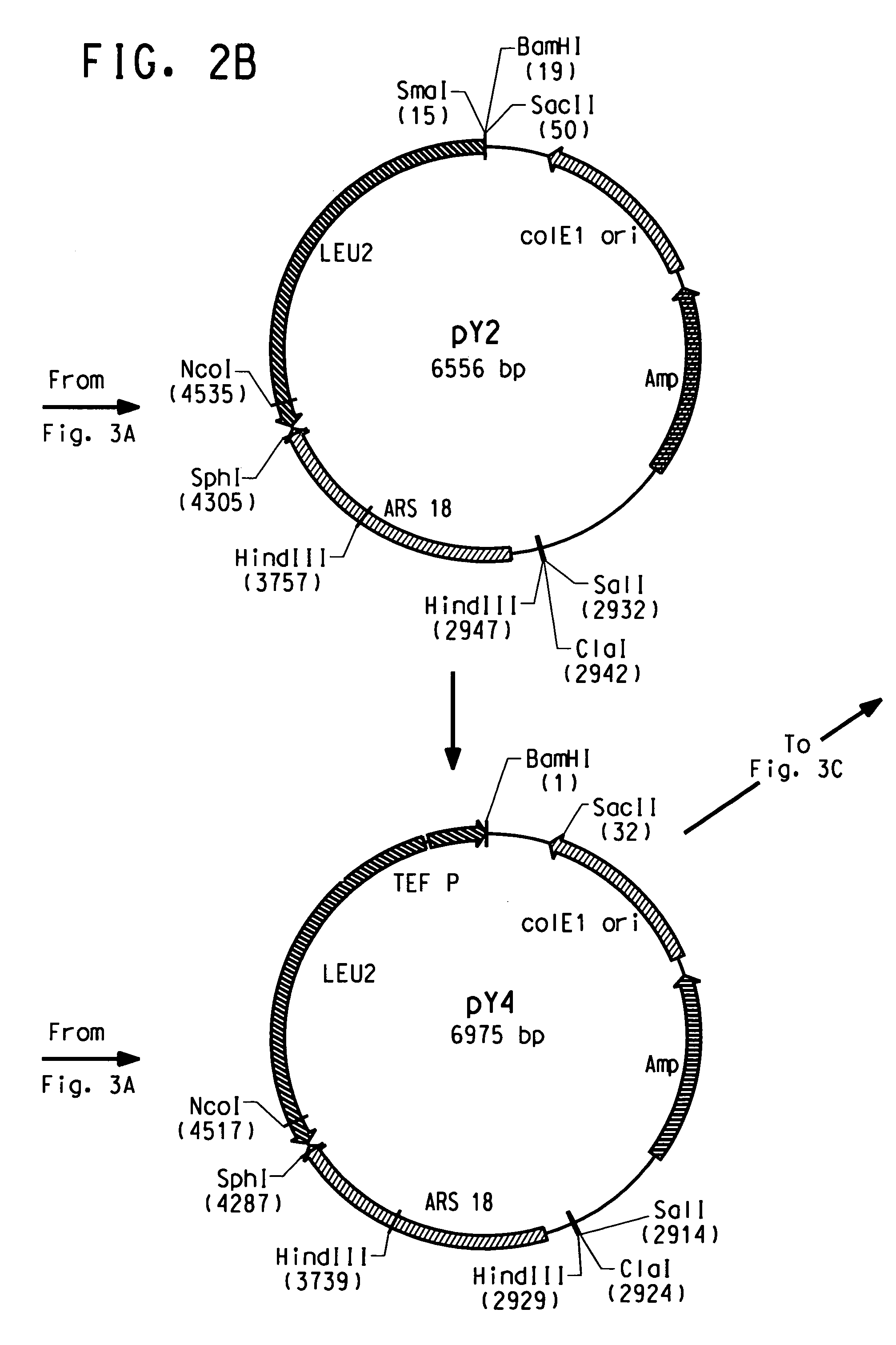Codon-optimized genes for the production of polyunsaturated fatty acids in oleaginous yeasts
a technology of oleaginous yeast and optimized genes, applied in the field of biotechnology, can solve the problems of uncontrollable fluctuations in availability of natural sources, high heterogeneous oil composition of natural sources such as fish and plants, and crops producing pufas are often not competitive economically with hybrid crops developed
- Summary
- Abstract
- Description
- Claims
- Application Information
AI Technical Summary
Problems solved by technology
Method used
Image
Examples
example 1
Construction of Plasmids Suitable for Heterologous Gene Expression in Yarrowia lipolytica
[0221]The plasmid pY5, a derivative of pINA532 (a gift from Dr. Claude Gaillardin, Insitut National Agronomics, Centre de biotechnologie Agro-Industrielle, laboratoire de Genetique Moleculaire et Cellularie INRA-CNRS, F-78850 Thiverval-Grignon, France), was constructed for expression of heterologous genes in Yarrowia lipolytica, as diagrammed in FIG. 2.
[0222]First, the partially-digested 3598 bp EcoRI fragment containing the ARS18 sequence and LEU2 gene of pINA532 was subcloned into the EcoRI site of pBluescript (Strategene, San Diego, Calif.) to generate pY2.
[0223]The TEF promoter (Muller S., et al. Yeast, 14: 1267–1283 (1998)) was amplified from Yarrowia lipolytica genomic DNA by PCR using TEF5′ (SEQ ID NO:7) and TEF3′ (SEQ ID NO:8) as primers. PCR amplification was carried out in a 50 μl total volume containing: 100 ng Yarrowia genomic DNA, PCR buffer containing 10 mM KCl, 10 mM (NH4)2SO4, 2...
example 2
Analysis of Conversion Efficiency of Wildtype Δ6 and Δ17 Desaturases and High Affinity PUFA Elongase in Yarrowia lipolytica
[0234]To ensure functionality of the wildtype Δ6 desaturase, elongase and Δ17 desaturase in Yarrowia lipolytica (prior to codon-optimization), conversion efficiency of each wildtype protein was measured. Specifically, the Mortierella alpina Δ6 desaturase, Saprolegnia diclina Δ17 desaturase and M. alpina high affinity PUFA elongase were expressed in the alternate host and screened for activity in substrate-feeding trials. Each enzyme was found to be capable of converting at least 23% of substrate to product.
Wild Type Mortierella alpina (Accession #AF465281) Δ6 Desaturase
[0235]The 1384 bp Ncol / Notl fragment of pCGR5 (U.S. Pat. No. 5,968,809), which contains the M. alpina Δ6 desaturase gene (SEQ ID NO:1), was inserted into the Ncol / Notl sites of pY5-2 (Example 1) to generate pY54.
Wild Type Saprolegnia diclina (ATCC #56851) Δ17 Desaturase
[0236]The wild type Δ17 des...
example 3
Determining the Preferred Codon Usage in Yarrowia lipolytica
[0252]Approximately 100 genes of Y. lipolytica were found in the National Center for Biotechnology Information public database. The coding regions of these genes, comprising 121,167 bp, were translated by the Editseq program of DNAStar to the corresponding 40,389 amino acids and were tabulated to determine the Y. lipolytica codon usage profile shown in Table 4. The column titled “No.” refers to the number of times a given codon encodes a particular amino acid in the sample of 40,389 amino acids. The column titled “%” refers to the frequency that a given codon encodes a particular amino acid. Entries shown in bold text represent the codons favored in Y. lipolytica.
[0253]
TABLE 4Codon Usage In Yarrowia lipolyticaAminoCodonAcidNo.%GCAAla (A)35911.4GCGAla (A)2568.1AGAArg (R)26313.2AGGArg (R)914.6CGCArg (R)1085.4CGGArg (R)2091.0CGUArg (R)1899.5AAUAns (N)25516.0GAUAsp (D)79533.2UGCCys (C)26853.2UGUCys (C)23646.8CAAGln (Q)30717.0G...
PUM
| Property | Measurement | Unit |
|---|---|---|
| pH | aaaaa | aaaaa |
| pH | aaaaa | aaaaa |
| pH | aaaaa | aaaaa |
Abstract
Description
Claims
Application Information
 Login to View More
Login to View More - R&D
- Intellectual Property
- Life Sciences
- Materials
- Tech Scout
- Unparalleled Data Quality
- Higher Quality Content
- 60% Fewer Hallucinations
Browse by: Latest US Patents, China's latest patents, Technical Efficacy Thesaurus, Application Domain, Technology Topic, Popular Technical Reports.
© 2025 PatSnap. All rights reserved.Legal|Privacy policy|Modern Slavery Act Transparency Statement|Sitemap|About US| Contact US: help@patsnap.com



